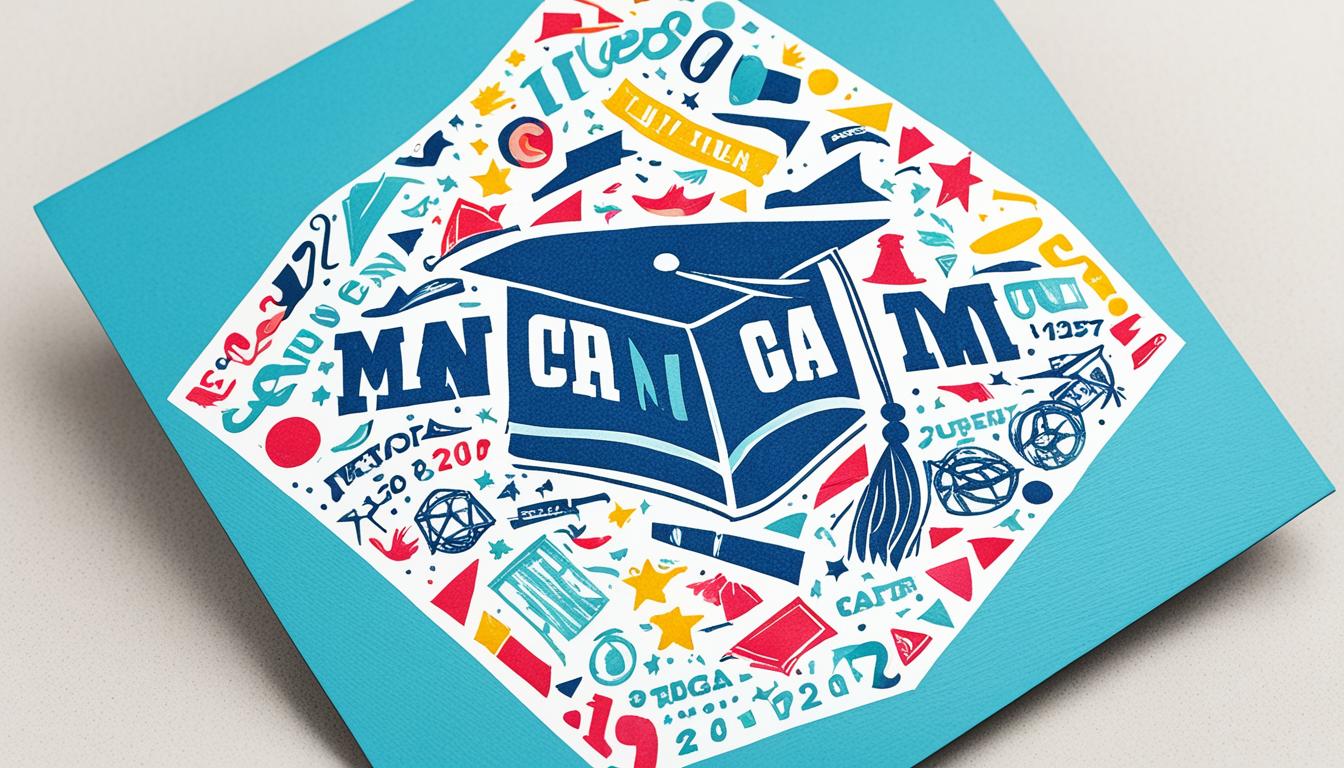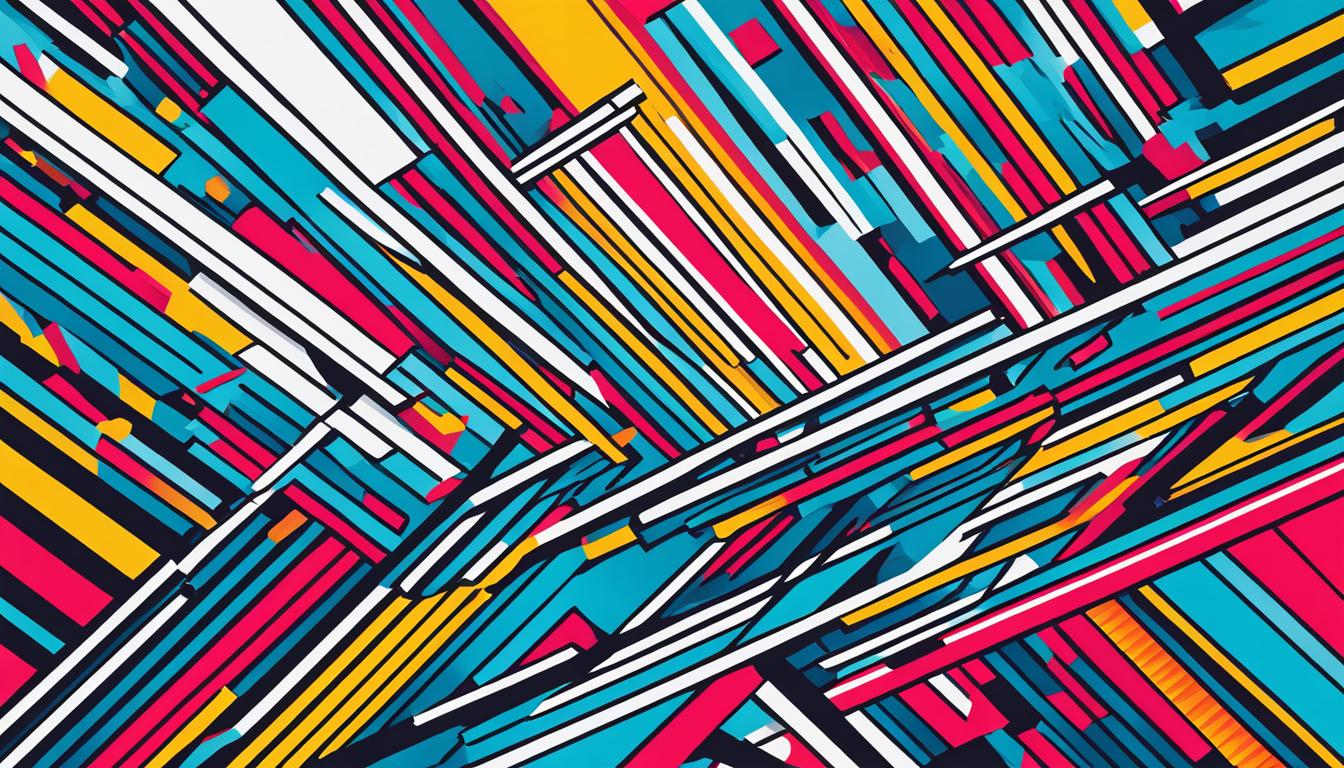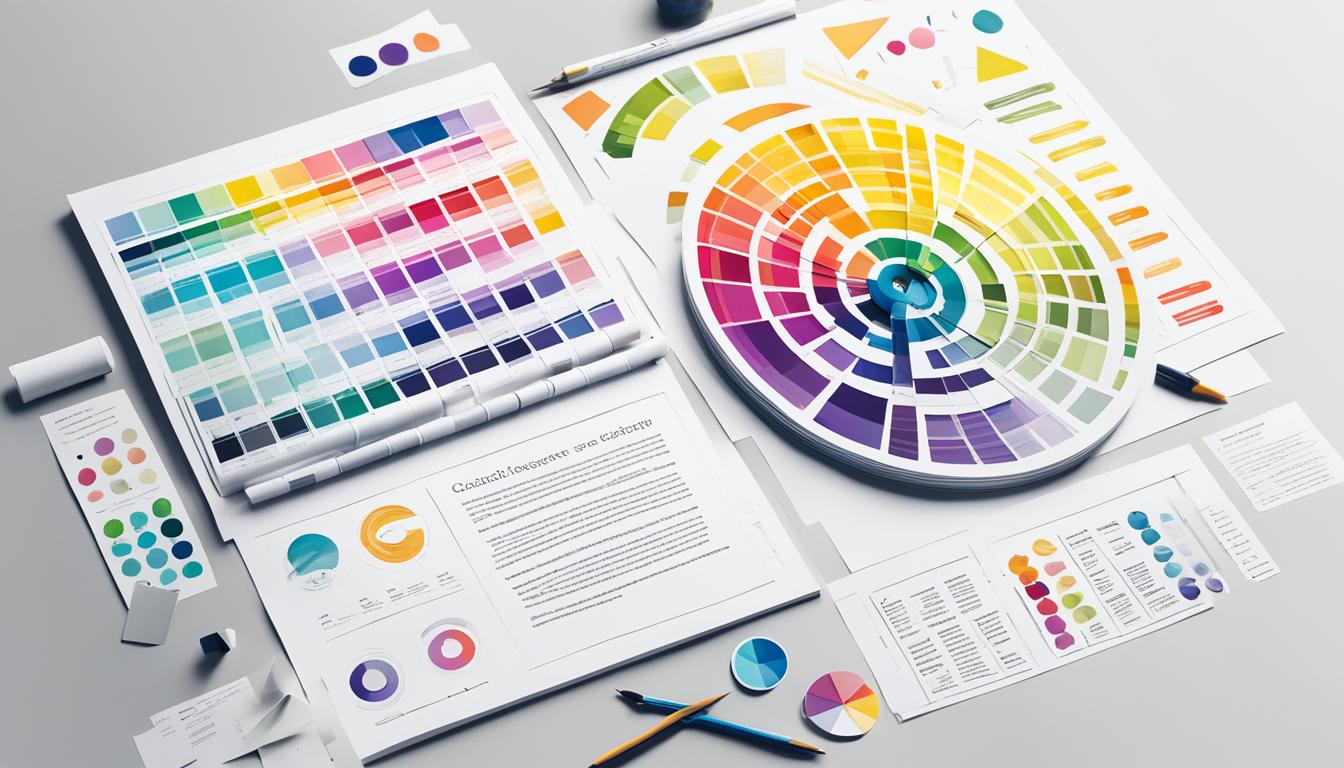Graphic Design Degree Explained – Your Career Path
Welcome to our comprehensive guide on pursuing a graphic design degree and discovering the exciting career possibilities in the creative industry. Whether you’re passionate about crafting visually stunning websites, designing captivating branding campaigns, or creating impactful illustrations, a graphic design degree opens up a world of opportunities for a fulfilling and dynamic career path.
As the world becomes increasingly visual, the demand for skilled graphic designers continues to grow. With a graphic design degree, you’ll gain the essential skills and knowledge to excel in this ever-evolving industry. From mastering design theory and typography to honing your creativity and project management abilities, a graphic design degree equips you with the tools necessary to bring ideas to life and communicate effectively through images and lettering.
Graphic designers play a vital role in various sectors, working on diverse projects such as websites, packaging, books and magazines, advertising campaigns, and exhibitions. They bring concepts to fruition, blending aesthetics with functionality to create visually compelling and memorable experiences for audiences.
In the graphic design industry, there are three main career paths you can follow: in-house, agency, and freelance. In-house designers work within large organizations and offer stability and higher salaries, while agency designers enjoy a variety of clients and projects, offering a more diversified workload. Freelance designers have the freedom to choose the projects that interest them but often require continuous client acquisition.
As you embark on your graphic design journey, key skills like creativity, originality, adaptability, and a strong command of design software will set you apart. Building a robust portfolio, gaining practical experience, and understanding clients’ needs are essential steps towards a successful career in graphic design.
Throughout this guide, we will explore the various career options available with a graphic design degree, discuss the future trends shaping the industry, and provide insight into how you can thrive in this exciting and dynamic field.
Career Options with a Graphic Design Degree
A graphic design degree offers more than just the career path of a graphic designer. With a diverse skill set and creative expertise, graphic design graduates have access to a wide range of exciting career options. Here are some potential job roles for graphic design graduates:
- Advertising Art Director
- Animator
- Artworker
- Concept Artist
- Exhibition Designer
- Illustrator
- UX Designer
- Web Designer
Additionally, a graphic design degree can be beneficial for pursuing other career paths, including:
- Creative Director
- Digital Marketer
- Fine Artist
- Game Artist
- Interior and Spatial Designer
- Multimedia Programmer
- Multimedia Specialist
- Printmaker
- Production Designer (Theatre/Television/Film)
- Urban Designer
The skills developed during a graphic design degree program make graduates versatile in various creative fields. These skills include branding, coding, computer software proficiency, digital media, editorial design, drawing and sketching, information design, interactive design, moving image, photography, printmaking, and typography. Many graphic design careers fall under the marketing umbrella, allowing graduates to explore job titles in the marketing category.
Work experience plays a crucial role in gaining practical skills, expanding one’s network, and enhancing the portfolio. Graphic design graduates can benefit from internships, competitions, exhibitions, and voluntary work to further their professional development.
Typical employers for graphic designers include advertising firms, branding specialists, design consultancies, media and communication companies, packaging companies, PR agencies, and publishing companies. Some graphic design graduates choose to set up their own studios or work as exhibiting artists.
For those seeking continued education, pursuing a master’s degree in specialized areas such as typography or illustration can provide additional opportunities for growth. Alternatively, taking short, further education courses to learn new technical skills is also a viable option.
With the vast array of career options available, a graphic design degree opens doors to exciting and fulfilling creative careers.
The Future of Graphic Design Careers
The graphic design industry is constantly evolving, driven by advances in technology and changing market demands. As technology continues to advance, graphic designers will need to stay up-to-date with the latest design software and digital tools. The demand for UX and UI designers is expected to continue growing as companies focus on creating seamless and user-friendly products and interfaces.
The rise of digital marketing and e-commerce has increased the need for graphic designers with expertise in digital media and online advertising. Specializing in specific areas of graphic design, such as branding, package design, environmental design, UI/UX, web design, textiles, illustration, or photography, can provide opportunities for career growth.
Marketing and communication skills are becoming increasingly important for graphic designers as they collaborate with clients and other professionals in the creative industry. Developing a strong portfolio, building a network of contacts, and staying proactive in seeking new job opportunities are crucial for success in the competitive graphic design industry. Overall, a graphic design degree offers a wide range of career possibilities in creative and design-related fields, and graduates can shape their careers based on their interests, skills, and professional goals.
FAQ
What is graphic design?
Graphic design involves using images and lettering to communicate information and ideas.
What skills does a graphic design degree provide training in?
A graphic design degree provides training in skills such as branding, typography, design theory, and project management.
What products do graphic designers work on?
Graphic designers work on a variety of products, including websites, packaging, books and magazines, branding, advertising, and exhibitions.
What are the work environments for graphic designers?
The work environment for graphic designers can be studio/office-based or home-based for freelancers.
What are the three main career paths in graphic design?
The three main career paths in graphic design are in-house, agency, and freelance.
What is the difference between in-house, agency, and freelance graphic designers?
In-house graphic designers work within large organizations, offering higher salaries but less creative freedom. Agency graphic designers work for agencies that serve various clients, offering more varied work but potentially lower salaries. Freelance graphic designers work independently, choosing the jobs that interest them but needing to constantly search for new clients.
What skills are needed for graphic design?
Skills needed for graphic design include creativity, originality, flexibility, strong knowledge of design programs, and the ability to understand clients’ needs.
What are the entry requirements for graphic design positions?
Entry requirements for graphic design positions often include a strong portfolio, work experience, and a degree in graphic design or related fields.
What is the typical career progression for a graphic designer?
The career path of a graphic designer typically starts as a junior designer, progressing to graphic designer, senior graphic designer, studio manager, and potentially art director.
What are the tips for success in graphic design?
Tips for success in graphic design include having a strong CV and portfolio, gaining as much experience as possible, networking, and staying up-to-date with design software.
What other career options are available for graphic design graduates?
A graphic design degree opens up a wide range of career options beyond just becoming a graphic designer. Potential jobs for graphic design graduates include advertising art director, animator, artworker, concept artist, exhibition designer, illustrator, UX designer, and web designer.
What skills are developed during a graphic design degree program?
The skills developed during a graphic design degree program, such as branding, coding, computer software skills, digital media, editorial design, drawing and sketching, information design, interactive design, moving image, photography, printmaking, and typography, make graduates versatile in various creative fields.
What are the typical employers for graphic designers?
Typical employers for graphic designers include advertising firms, branding specialists, design consultancies, media and communication companies, packaging companies, PR agencies, and publishing companies.
Are there further study options for graphic design graduates?
Further study options for graphic design graduates include pursuing a master’s degree in specialized areas such as typography or illustration or taking short, further education courses to learn new technical skills.
How can work experience help graphic design graduates?
Work experience through internships, competitions, exhibitions, and voluntary work can help graphic design graduates gain practical skills, expand their network, and enhance their portfolio.
How can graphic designers stay relevant in the industry?
As technology continues to advance, graphic designers will need to stay up-to-date with the latest design software and digital tools. Specializing in specific areas of graphic design, such as branding, package design, environmental design, UI/UX, web design, textiles, illustration, or photography, can provide opportunities for career growth. Developing a strong portfolio, building a network of contacts, and staying proactive in seeking new job opportunities are crucial for success in the competitive graphic design industry.










